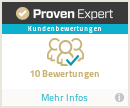Product Discovery and UX Research. Are They the Same Thing?
1. July 2022 2023-09-28 11:04Product Discovery and UX Research. Are They the Same Thing?
Are product discovery and UX research just different terms with the same meaning? The short and simple answer to this question is: No! They are not. Let me tell you what the difference between discovery and research is:
Product discovery is the first step toward developing or improving your product and should thus be an integral part of any business strategy. It involves understanding your users’ needs and wants and finding solutions to meet them.
This is where UX research comes into play. Nevertheless, UX research is not the whole shebang. This article will explain both terms and their significance and discuss other types of input needed during the discovery phase.
Terminology – product discovery and UX research
UX research or user research systematically studies a product’s target audience or actual users and their behaviour, needs, pains, desires, and such. Various methods, roughly divided into quantitative and qualitative research, can expose design opportunities and uncover crucial information upon which design decisions can be based.
Product discovery, on the other hand, is a loose, open, and flexible framework of methods and techniques that help you decide what to build next, which of the retrieved opportunities to pursue further, and what decisions to make.
In that respect, UX research is one of the many building blocks used to plan and conduct successful product discoveries. Accordingly, both terms certainly do not mean the same thing.
Product discovery – the whole shebang
Product discovery describes an open-ended, in-depth exploration of a new or known subject area with a complete development team. The focus lies on identifying problems or needs relevant to users or people from a particular target group.
In the process, opportunities arise, and assumptions are made that need to be examined for their potential and risks. Risk assessment takes place in at least four dimensions (Cagan, 2017): value, usability, feasibility and viability. IOW:
- Does the idea or product create enough value for the users to buy it?
- Do they understand how it works, and can they use it?
- Are we able to build it (on time and within our budget)?
- And does this idea or solution ‘click’ with the rest of our business?
The ultimate goal of every product discovery should be to best reduce those risks.
You should complete several investigations to evaluate these questions and reduce those risks. But more on that below.
There is no fixed schedule for conducting product discoveries nor a predefined time frame. But if a product is constantly developed and improved, it is advisable to implement continuous discovery routines and make product discovery one of your team’s daily habits (Torres, 2021).
Why do you need UX research?
UX research helps you discover or identify your product’s target audience and their pains, gains, needs, desires, behaviours, and such. Therefore, it allows you to answer questions regarding the value and the usability of your product or idea.
For instance, the more information you gather about your users – i.e. through interviews or surveys, the better you can form assumptions about what is valuable to them. This – together with testing those assumptions – is one way of lowering the value risk.
Later in the process, you will want to determine if your users understand your solution – maybe you even want to compare different solutions regarding their usability. The various types of usability testing will help you lower the usability risk.
Other types of input needed for successful product discoveries
As illustrated above, UX research can only reduce two of the four significant risks. So, for conducting a successful product discovery that lowers all four risks, you must add more input sources.
Unravelling information from these other sources is not significantly different from UX research regarding methodology. You can use similar techniques like interviews, prototyping, web research and looking for trends. But you will talk to different people – i.e. stakeholders or team members – and look for other information such as technical or subject matter facts.
One example of feasibility risk minimisation is to build a feasibility prototype. That’s a prototype used to “prove or disprove whether a technique or technology will work in the product context” (Skinner, 2020). Another example would be to just talk to your developers.
On the other hand, a vision type can help you get buy-in or critical feedback from the management or other significant stakeholders and reduce the uncertainty of viability.
Lastly, it should be mentioned that those other information sources can also add up to reducing the uncertainty regarding value and usability. Analysing trends, doing market research and using common usability heuristics are only some of the steps you can pursue. (Of course, these actions could also be considered UX research – there is no separation precision in this world 😅)
Conclusion
Product discovery and UX research are not the same, but the former does not work without the latter. Beyond that, doing only UX research in your product discovery will not give you enough information to reduce as many risks and uncertainties as possible. Instead, further research methods or research areas are needed in addition.
If you want to learn how to conduct successful product discovery and UX research activities, have a look at my 12-session discovery coaching program and feel free to contact me for an initial call.
Relevant Resources
Cagan, M. (2017). The Four Big Risks. Silicon valley product group. https://www.svpg.com/four-big-risks/
Skinner, J. (2020). Rapid learning and risk reduction with Feasibility Prototyping. Thrive Wearables. https://www.thrivewearables.com/rapid-learning-and-risk-reduction-with-feasibility-prototyping/
Torres, T. (2021). Continuous Discovery Habits: Discover Products That Create Customer Value and Business Value. Product Talk LLC. https://www.producttalk.org/









